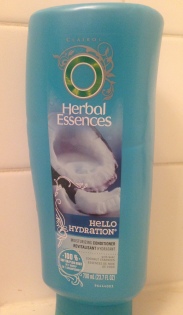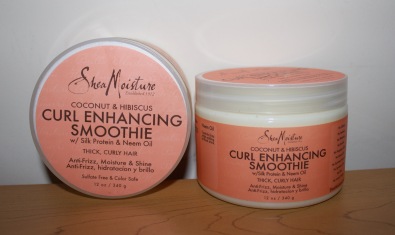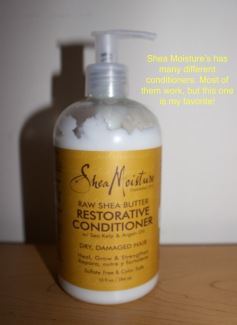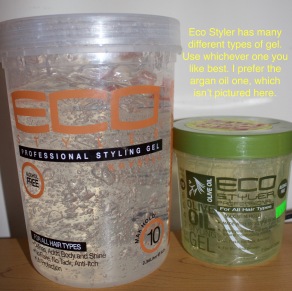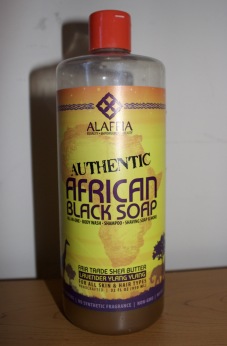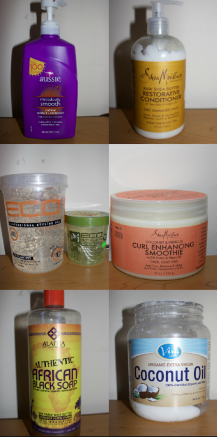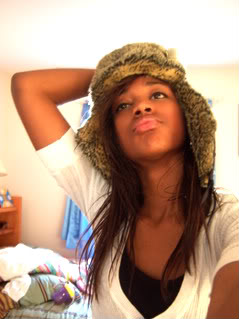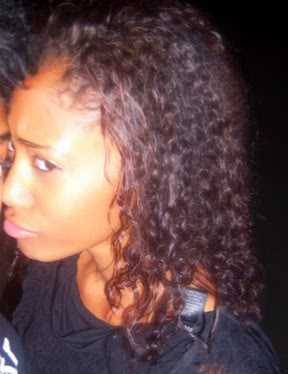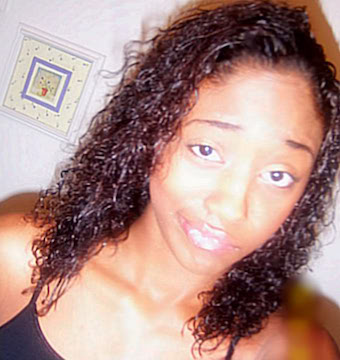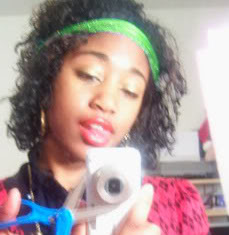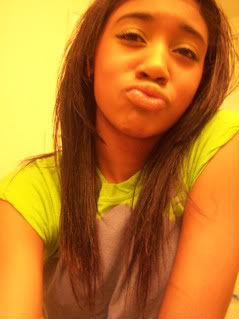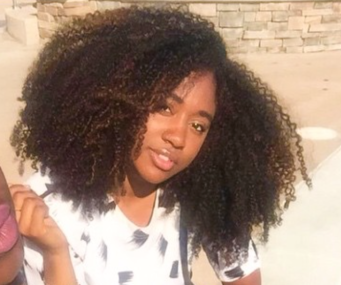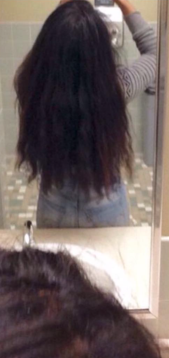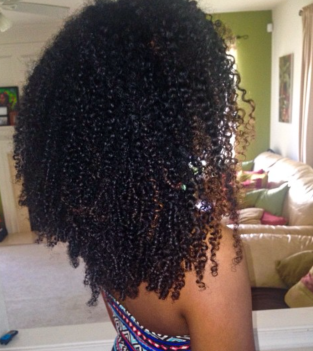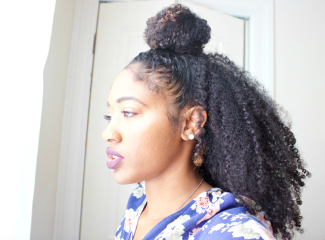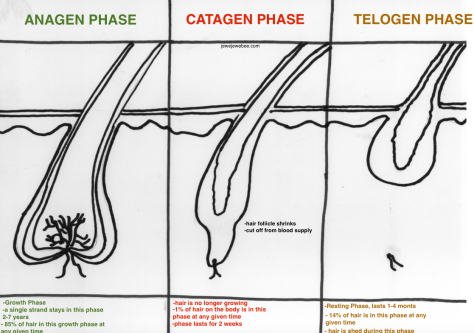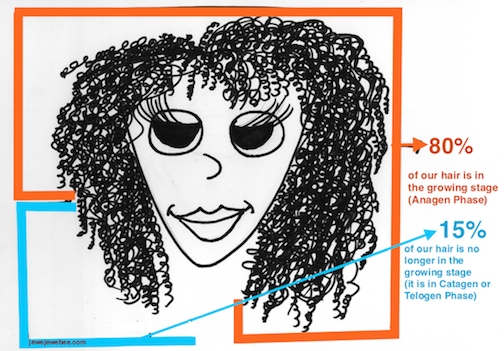In Part One, we discussed the myth of saying “My Hair Isn’t Growing” and the different phases of hair growth (click to read). We also discussed how our hair is never is a phase or state, where the entire head of hair is not growing. So now that we know that your hair actually IS growing, we can address some of the causes for a lack of length retention. When my hair was dry, thin, brittle, and stuck at bra-strap length, there were a few unknowingly damaging hair habits that I engaged in.
My severely damaged hair (and awful outfit/makeup) vs. my healthy hair

It wasn’t until I stopped doing these things to my hair by adopting healthy hair practices and by nurturing and respecting my hair, that my hair became long, thick, healthy, and thriving.
Here is a list of my 5 Don’t (or things to avoid) if you want long, healthy, and thriving hair
1. Don’t Use Direct Heat
-Heat IS the enemy for long, HEALTHY, and THRIVING hair. I’ve had plenty of people tell me that heat is NOT a problem when used “correctly” and they have warned me against advising people to not use heat (sometimes they defend the flat iron so hard from my insults, you’d think it wasn’t inanimate and could get it’s feelings hurt). But let me ask this, what is the healthy way to apply hundreds of degrees to a fragile fiber and then expect it to thrive and be it’s healthiest and longest? For example, you can’t put greasy, chemical laden foods (even if they are of the “healthiest” of the greasy, chemical laden foods) into your body and expect to be your HEALTHIEST. Yes, you may seem healthy for a period of time, however, you may never know how healthy you COULD be, look, or feel if you replaced those unhealthy foods with real, whole foods. And on top of it, all of these poor dietary habits could seem to have no effects during the present time but are likely to lead to dis-ease and severe problems down the line. The same is with your hair; you may be able to achieve “seemingly” healthy hair, however, you will never know how healthy your hair COULD be and look or how long it COULD potentially grow if you continue to use heat. This could leave you thinking that your hair is only able to grow to waist length when if you eliminated heat, your hair could grow to tailbone length ( or even knee length) and be even more lustrous and fuller than you’ve ever imagined! As I’ve said in Part 1, the main problem that people have isn’t with hair GROWTH, but it is with length RETENTION. Heat is the number 1 MOST AVOIDABLE and silent killer of long hair, and there is no “safe way” to apply it, only better ways. Even though your hair may currently seem “healthy”, the cumulative affects of heat could lead to unavoidable damage, breakage, brittleness, and thinning down the line that WILL prevent length retention. The sad thing is, a person who flat irons may never know of these affects because what does she have to compare it to? She can’t compare it to her long, juicy, knee length curls because she will never achieve them due to flat ironing. If achieving the longest, and HEALTHIEST hair is your goal, then engaging in unhealthy hair practices is not only counterproductive to achieving that goal, but it is extremely harmful. And also, just as some people can eat greasy foods everyday and not get disease, it doesn’t mean that it can work for everyone. Just because person A doesn’t see any visible (hundreds of degrees of heat is still damaging at the micro level) doesn’t mean that the same will be for person b. Some people have hair that is more prone (or less prone) to heat damage and their hair can get damaged from the very first time of flat ironing it. However, I’ve personally never seen someone with naturally curly hair use heat and have healthy, long, THRIVING, WELL DEFINED, unmodified curls (meaning it may be long, but long doesn’t always mean healthy). If you want more information on the science behind the harmful effects of heat, please watch the following video where I discuss the damaging affects of heat and how it is detrimental to hair growth (click to watch). If you are truly committed to growing long, naturally, curly hair, then eliminating heat should be the FIRST step.
2. Don’t Use Relaxers, Bleach, Or Other Harsh Chemicals
-These processes damage the structure of the hair, making it more vulnerable to damage. Anything has the possibility of damaging your hair, including the washing process, the detangling process, playing in your hair, and simple everyday manipulations of your hair. However, when hair is strong, healthy, and not damaged, it has a defense system that is able to defend itself from these potentially damaging processes. Just think of your immune system. Everyday, we encounter pathogens, viruses, and bacteria that have the ability to be harmful. When our immune system is strong, we suffer no ill effects and our immune system is able to fight these things. However, when our immune system is compromised, a usually “harmless” virus, pathogen, or bacteria can be EXTREMELY harmful and detrimental to us because our defense system has been compromised and is not able to put up as hard of a fight as it was during previous exposures. The same is with our hair. The cuticle (the outermost layer of the hair shaft) is our protection (comparable to the immune system for our body). When the cuticle is healthy, it is able to protect our hair and the inner layers (the medulla and cortex) from everyday manipulation . However, when the cuticle (our “immune system”) has been compromise and destroyed (through relaxers, bleach, and heat), our hair is left defenseless. Now, with our cortex and medulla exposed, the everyday manipulations that were previously harmless, such as combing, washing, playing in your hair, or just putting your hair in a bun or ponytail, can lead to breakage. This is why we sometimes see short bits of hair on our bathroom counter or on our shirts even though we barely manipulated our hair. This is also why combining heat AND chemicals is the worst combination for your hair because now, you’re introducing an EXTREMELY damaging process (heat) to your already compromised, defenseless hair (chemically processed hair with a compromised cuticle). You can watch my YouTube video here where I talk about my experiences with coloring my hair and color damage.
3. Don’t Rush Through The Detangling Process
This is one of the FASTEST ways to create damage and breakage. Even though it may have been months or over a year since you used heat or chemicals on your hair, the affects that these processes have made are irreversible. You cannot reverse damage that has been done to your hair (because once hair leaves the scalp, it is no longer living and does not have the ability to repair itself like your skin and other organs). You will have to wait until the hair is 100% grown out to see your true and authentic, undamaged, and completely healthy hair texture. This is not to say that your hair while growing out cannot be healthy or thriving; it is just not its 100% authentic and optimal healthiness. If you have waited this time period, or if you’ve never used heat or chemicals, and you still still aren’t able to retain length, the next thing to check is how you are detangling your hair. If you can’t already tell, I love analogies. However, I’m going to actually try to explain this without them for once. Haha! So let’s say that we actually grow our hair to it’s healthiest, longest length possible. It’s finally full and thick and to your tailbone. One particular day, our hair is extremely knotty and we are in a rush to meet up with friends to go to the movies (oh no, this might be heading into analogy territory). After we get out of the shower we see that we have 20 minutes to detangle our hair…which usually takes around 1 hour to detangle. Instead of taking our time, gently separating the tangles, and starting from the very bottom of our hair, we rip through our curls and it takes only 20 minutes. While this may not cause any noticeable affects after one time, if we repeatedly detangle our hair this way, we literally rip off all of the growth that we have had… and hair retention no longer exists. Many people rush the detangling process and don’t spend enough time gently and patiently ridding their hair of tangles. Make sure that when you detangle your hair, that you are going at the speed at which your hair needs/ wants to be detangled… not at the speed you want it to go. Detangle your hair only when you have enough time to do it, and when you have the patience to do it, starting from the ends and slowly working towards roots. If you don’t have as much time to detangle your hair as you’d like, protective styling should be incorporated to protect your hair from getting tangles in the first place.
4. Don’t Let Your Hair Get Brittle, Dry, Or Go Too Long Between Washes
Water is the only thing that moisturizes your hair. Anything else either contains water as the first ingredient or helps to lock the water into your hair. Conditioners usually contain water as the first ingredient (with additional ingredients that allow for slip, retention of water, fragrances, and humectants that attract water to the hair, etc). Oils and butters are used to add shine and/ or seal the water into the hair that is ALREADY THERE. Applying oils and butters on third (fourth or more) day hair is not moisturizing because oils and butters do not contain water to moisturize your hair . On wash day, when you have placed oils, conditioners, and butters on your hair, these products coat the hair and make it to be harder for water out (which is good for a moisturizer) and for water to get in. (Unfortunately, if your hair has been damaged from over using chemicals and heat, then your cuticle’s layer has been permanently destroyed and there will be holes and opening in the hair. Due to the fact that the cuticles are now no longer flat and closed, the simple act of washing your hair can be damaging because your hair will absorb too much moisture. However, the hair also cannot hold onto moisture, due to the cuticle layer being opened, which allows water (or moisture) to escape. Now the hair is left feeling dry and frizzy no matter how “good” your products are.)That is why refreshing your hair or a nightly routine of oiling your hair for “moisture” is ineffective at moisturizing your hair. This process is ineffective for two reasons: 1. because usually the same chemicals that keep water in your hair, are just effective at keeping water out. Therefore, water isn’t able to get in and moisture your hair because it is coated. And also 2. because oils and butters do not moisturize the hair, they only keep moisture in. That is why it is important to WASH and remove product buildup up regularly from your hair and not just your scalp with a gentle shampoo or other buildup remover (my next article will give shampoo recommendations and recipes on ways to remove product buildup). Water is not able to enter your hair if it is built up with products, thick oils, butters and creams. Getting rid of the build up allows water to enter your hair and the products to do their best at keeping the water, or moisture, in. I find that my hair is OPTIMAL when I wash my hair (and the length of my hair) every 3 days, but I usually do it once a week because sometimes a sister ain’t “got time for that”. My hair was the worst when I would go every 2-3 weeks. My hair would be/ look dry and brittle by the time that I washed it. Don’t do what I did; if your hair already feels dry or brittle, it’s way past the point of needing to be washed. And don’t be fooled by hair that feels soft. A lot of products contain chemicals that can make your hair artificially feel and look soft, even though it is severely dehydrated and thirsty on the inside.
5. Don’t Play In Your Hair
I may be one of the few people who has this problem, but I doubt this since I spy my sister and mother doing this same damaging habit as well… playing in the hair. I have inch chunk of hair on my right side that is about 5 inches long because I am right handed and I play in it so much… It doesn’t grow past that point because it’s constantly breaking off. Even though playing in your hair can be harmless, repeatedly doing it, to the point where it is a habit, can be damaging. After a bout of playing in my hair, I usually see shorts bits of hairs (not with a white bulb at the end) that have been broken off, laying on the table or on my shirt. Also, playing in the hair create single-strand knots, or fairy knots, that are not only annoying but can also cause tangles. Unfortunately, it has become such a habit that I don’t realize that I’m doing it. If you catch yourself playing in your hair, try to just stop. If your not able to stop and you catch yourself playing in your hair while you’re bored, put your hair up and away from the graspe of your hands. Luckily I mostly wear my hair back at work so this habit has been cut a lot!
Summary
I know that this has been a lot of information, so I’m going to summarize everything up into one section. I believe that when trying to get long hair, what you don’t do to your hair, is just as important, and maybe even more important, than what you are doing to your hair. Getting rid of heat is my number one recommendation for getting long and healthy curls. One will never know how long and healthy her hair can look if she keeps applying hundreds of degrees of heat to it. Applying chemicals to our hair damages the cuticle layer, which is our hair’s defense mechanism. Once our hair’s defense mechanism has been damaged, our hair is more prone to being damaged by seemingly harmless things such as washing and combing. Also, heat and chemicals cause damage to the cuticles by creating holes in the cuticle and by making the cuticle layers stand up instead of laying flat as they are supposed to. This creates a head of hair that even the most perfect and moisturizing product, couldn’t moisturize, due to water escaping from the open cuticle.
Also, if you’ve stayed away from heat and chemicals, and length retention is still a problem, know that rushing through the detangling process literally rips all of your growth off and can be instantly as harmful as any flat iron or chemical when it comes to length retention. Next, make sure that you are removing the product buildup from your hair before apply conditioners, butters, and oil. If you apply these things to dry hair that is coated with products that prevent water from entering, then you are not effectively moisturizing your hair. Also, know that oils and butters do not contain water so they will never moisturize your hair; they just keep water in (therefore, they should only be applied to hair during the first 24 hours of washing). Finally, don’t play in your hair because it can cause breakage and single-strand knots.
Hopefully this article brought insight to any problems that you may have with length retention. I know that it can be hard to pinpoint the problems that we are having with our hair, but when we are aware of what’s damaging our hair, these become unavoidable , preventable and we can see a change in our hair towards healthy, long, and thriving hair. If your hair has been damaged due to these 5 things, the best thing to do is wait for your hair to grow out… there unfortunately isn’t a magic potion to revive your hair, which is why preventing the damage in the first place is so important. The plus side is that hair is constantly growing. We won’t be plagued by the damage that we did to our hair, for the rest of our lives. As as soon as today, you have the ability to make changes to your hair routine that can lead to super long and healthy curls.
Come back tomorrow for the final post of this series: “Part 3: Developing a Great Hair Routine, Product Recommendations, Tips/ Supplements”

